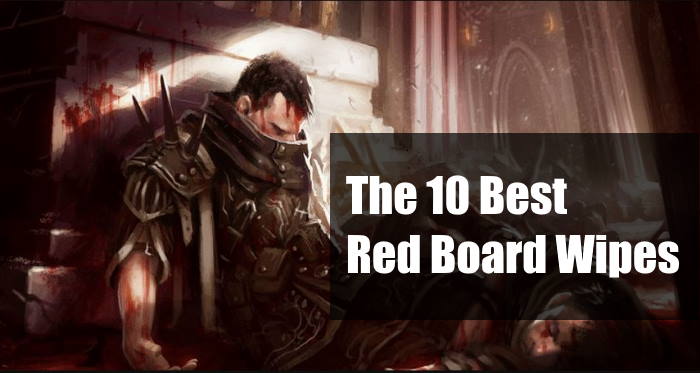One of red’s biggest strengths is creature removal, and that includes clearing the
Most of red’s
While every
Table Of Contents:
What Makes a Good Red Board Wipe?
The qualities that great red sweepers have are the same qualities we look for in all of our magic cards:
- Are they efficient?
- Are they good in multiple situations?
- Can we gain some extra advantages by using them?
For red
What Are the Advantages of Red Board Wipes?
The fact that red sweepers use damage can often be one of their biggest strengths. Many of them let you deal different amounts of damage depending on your circumstances.
Instead of paying a fixed cost to destroy all creatures, you can pay more mana to remove larger creatures, or less mana to remove smaller ones. If you have the largest creatures on the
Some cards also synergize with dealing damage, so red
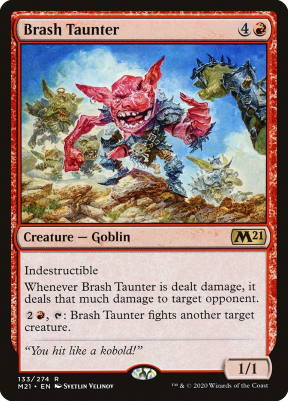
What Are the Disadvantages of Red Board Wipes?
Of course, that strength can also be a weakness. Dealing enough to damage to kill an eldrazi titan can be expensive, or at worst, impossible. If your opponents have even one or two of these big threats, you might not be able to kill their best creatures.
There are also multiple keywords that protect against these
RELATED: MTG Protection: How It Works and What It Does
The rules around protection can be confusing, but it works against damage, not destruction effects. If you’re expecting your opponents to run this keyword, black or white might have sweepers that are better in your meta.
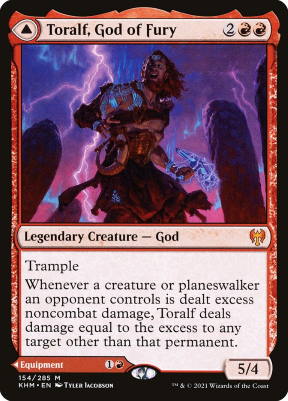
What Strategies and Tactics Work with Red Board Wipes?
Even though most
When you’re playing around your own red
With large creatures, though, you can play them and do just enough damage to keep them alive. You can make a lot of these
Honorable Mentions
Before we take a look at red’s best ten sweepers, I want to mention other solid options for low power decks. Even if these cards aren’t the most competitive, they can still be fun options for the right build.
Star of Extinction
Star of Extinction might not be my first recommendation, but analyzing its strengths and weaknesses will really highlight what we’ve discussed so far.
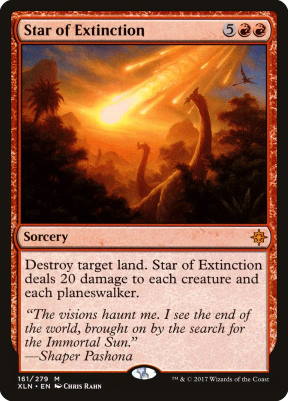
On the surface, it might surprise you that Star of Extinction didn’t make the cut. Dealing 20 damage for just seven mana is quite efficient, and destroying a land is a nice bonus. However, seven mana is a lot to ask for when you look at other red sweepers.
Other red
| Pros | Cons |
| High damage | Expensive |
| Works on planeswalkers | |
| Destroys a land |
Starstorm
Starstorm has a few nice perks. Casting it at instant speed gives you lots of options. You could wipe the
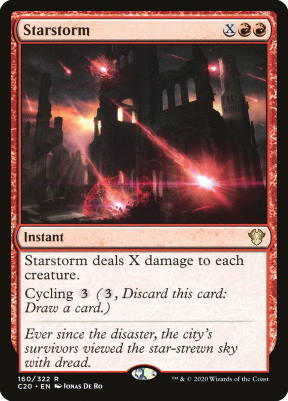
Cycling it when you have a strong
| Pros | Cons |
| Flexible | Can be expensive |
| Instant | |
| Cycles |
Top 10 Red Board Wipes
Now that we know what we’re looking for, let’s go over the best
#10: Molten Disaster
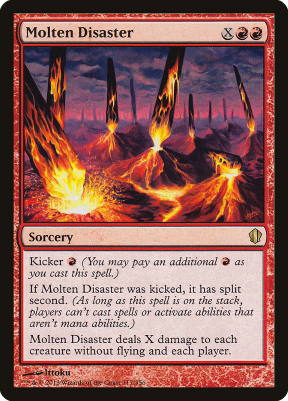
Molten Disaster has a similar problem to Starstorm: more damage means more mana, and that can force you into really inefficient plays. Kicking it also stops you from pumping more mana into its X cost.
Still, split second is one of the strongest mechanics in the game. Sometimes you need to make sure your
If you have the highest life total, there’s also a chance you can take out the other players without giving them a chance to respond. I’ve won multiple games off of a kicked Molten Disaster, in large part due to the fact that players can’t usually respond to it. Special actions get around split second, but those are too rare to ignore the power of this keyword.
RELATED: What Is The Stack in MTG and How Does It Work?
| Pros | Cons |
| Flexible | Can be expensive |
| Split Second | Doesn’t remove fliers |
| Damages players |
#9: Chain Reaction
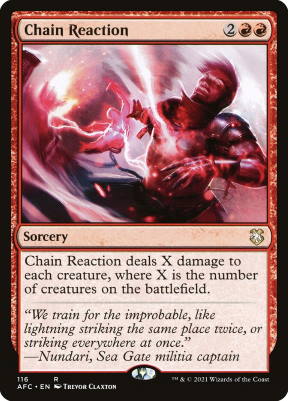
Chain Reaction can be incredibly efficient with the right
To be clear, though: this card is not Damnation. There will be times where there aren’t a lot of creatures out, or where some creatures will survive the damage. This card depends a lot on your opponents’ boards, so it’s hard for you to consistently know how strong it will be.
| Pros | Cons |
| Cheap | Situational |
| Can deal high damage |
#8: Hour of Devastation
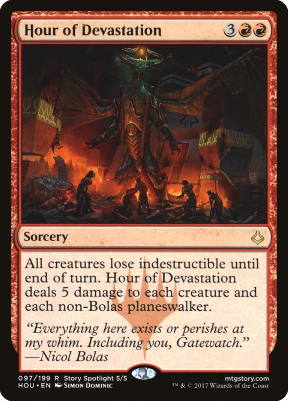
Leave it to Nicol Bolas to decimate your opponents’ armies. Hour of Devastation is a great option for clearing the
My favorite part about this card is that it removes indestructible. Not only can this get rid of gods, but it also means Heroic Intervention can’t save somebody’s
RELATED: MTG Indestructible: How It Works and What It Does
| Pros | Cons |
| Works on planeswalkers | Low Damage |
| Removes indestructible |
#7: Rolling Earthquake
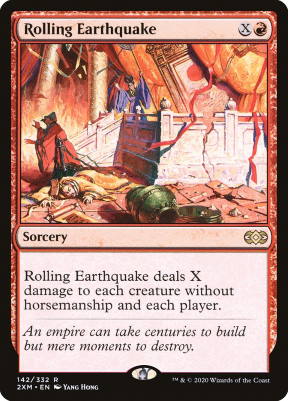
Rolling Earthquake is a classic
However, it has the same drawback as some of our previous
| Pros | Cons |
| Flexible | Can be expensive |
| Damages players |
#6: Delayed Blast Fireball
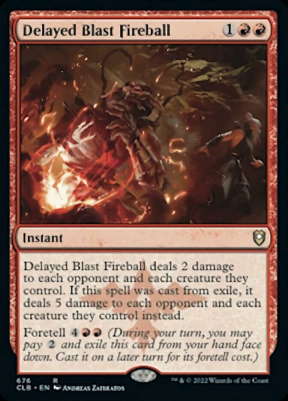
Delayed Blast Fireball is a decent
What really excites me about this card is combining it with impulsive draw. Red has received a flood of cards in recent years that let you exile cards and play them until the end of the turn, and Delayed Blast Fireball has a ridiculous amount of synergy with these effects.
You don’t have to foretell this card to get the higher damage output; you just have to cast it from exile. This means that if you cast it from an impulsive draw effect, you’ll get more damage and get to cast it for its normal cost of three mana! This synergy is so powerful that I had to include it in the top half of this list.
| Pros | Cons |
| Flexible | Expensive with foretell |
| Damages opponents | |
| Synergizes with impulsive draw |
#5: Chandra’s Ignition
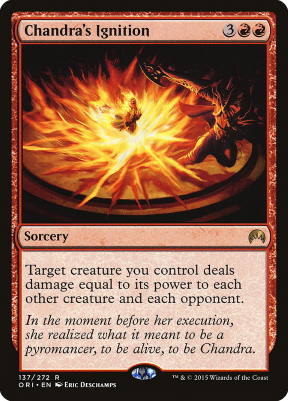
Chandra’s Ignition isn’t the strongest
As long as your deck has enough large creatures, you can feel confident in running this
It also damages your opponents while keeping you safe, so it’s a pretty reasonable win condition. In a voltron or infect strategy, this
| Pros | Cons |
| Always leaves you with a creature | Requires a big creature |
| Damages opponents |
#4: Anger of the Gods
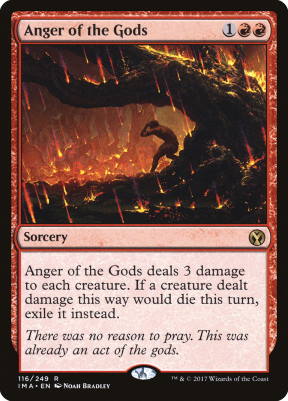
Anger of the Gods excels at what it does, but it goes into decks for specific reasons. If your playgroup doesn’t run token or go-wide strategies, then Anger of the Gods will be lackluster. It just doesn’t deal enough damage to handle with most threats.
If you do know that you’ll be facing lots of small creatures, though, it’s hard to beat Anger of the Gods. It’s cheap, lets your big beaters live, and exiles whatever it kills.
This is a great option for decks with lots of large creatures, or for metas with lots of cheap, aggressive decks.
| Pros | Cons |
| Cheap | Low Damage |
| Exiles creatures |
#3: Brotherhood’s End
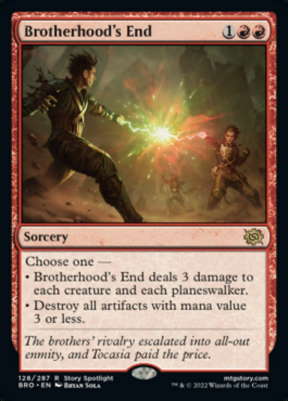
It might not exile creatures, but I see Brotherhood’s End as a stronger version of Anger of the Gods. Not only does it hit planeswalkers, but it also has a second mode. Against artifact decks, destroying all of their tokens and cheap tools can be backbreaking. Especially when you consider how prevalent treasure tokens have become, having an easy answer to artifacts seems incredible.
Of course, you still need to temper your expectations with this card. No matter which mode you choose, you can’t use this to take care of bigger threats. Still, I think this will make a great addition to slower red decks.
| Pros | Cons |
| Cheap | Only removes small/cheap cards |
| Flexible | |
| Works against many card types |
#2: Vandalblast
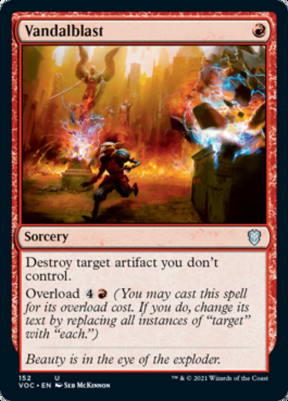
This pick might surprise you, but make no mistake: Vandalblast is a
RELATED: The Best Mana Rocks in Magic: the Gathering
Perhaps the best part about this card is that it has overload. If there’s only one artifact you really care about, you can destroy it for just one mana. Otherwise, you can overload it. Both sides are quite efficient, and you could honestly include this in any red deck and be happy.
| Pros | Cons |
| Flexible | None |
| One-sided |
#1: Blasphemous Act
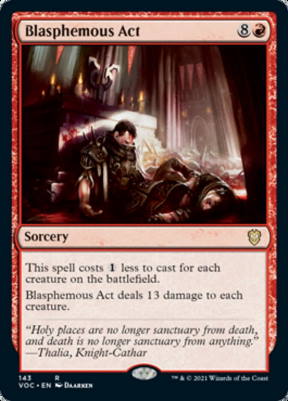
Putting Blasphemous Act at the top of the list was an easy choice. Unlike some of the other red
13 damage will get rid of just about anything, and you’ll often be paying just one or two mana for it. No other
| Pros | Cons |
| Can be cheap | Can be expensive |
| High damage |
End Step
There are plenty of red sweepers to choose between, and some have different uses than others. Whether you’re trying to smoke out a few tokens or set your opponents’
